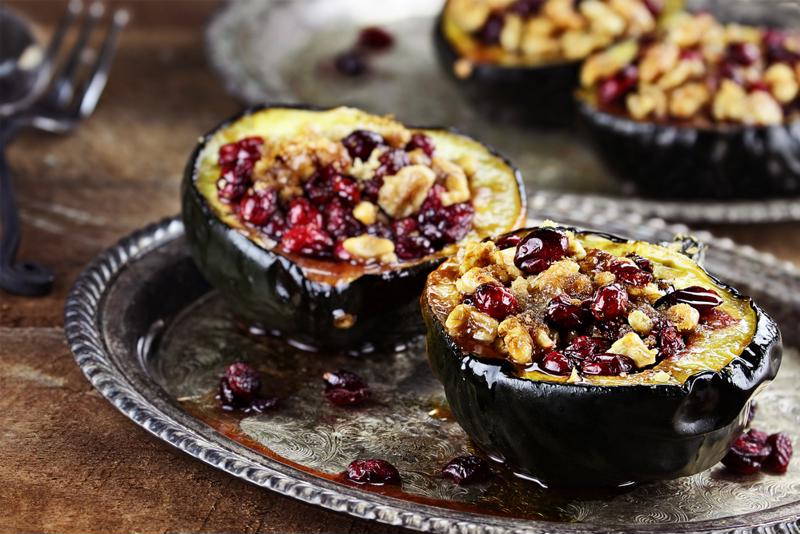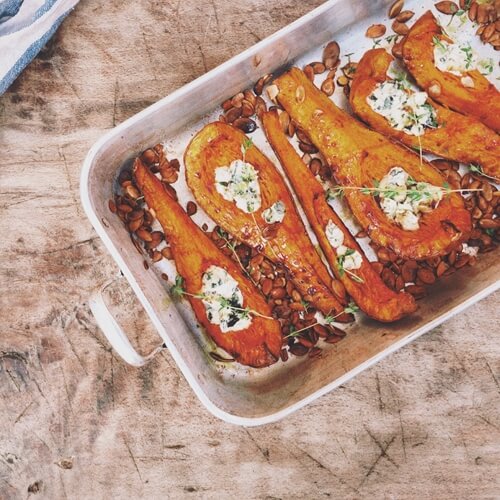Your Guide to Seasonal Squash
When it comes to squash aside from the pumpkin and spaghetti varieties, many of us are entering uncharted waters. However, it’s a shame to stick to only these familiar types of squash when there are so many different types out there that may be better for the meal that you’re making. Anyone who’s enrolled in culinary arts programs would benefit from knowing how to identify different types of squashes, what they taste like, and how to prepare them:
 Try serving your meal right inside halved acorn squashes.
Try serving your meal right inside halved acorn squashes.Acorn squash
Acorn squash is one of the smallest varieties of squash, perfect for a meal prepared for two. This mild, sweet squash is perfect to stuff and eat straight out of, as even the skin is edible once it’s been roasted and softened. You can cook it by sauteeing or baking it as well. When shopping for an acorn squash, look for one that’s firm and heavy. It’ll likely be dark green, with some orange patches. If there’s a lot of orange, move to the next squash – it’s too rough and will be tough when you eat it.
Butternut squash
If you’re looking for a sweet, yet savory squash, look no further than butternut. These large, cream-colored squashes may look like they’d be bland, however, they’re anything but. Some people even choose to trade out the pumpkin in a pie with pureed butternut, or for those on a low-carb diet, this squash makes a good substitute for sweet potatoes. Like an acorn squash, make sure the butternut you pick up is firm and heavy.
Hubbard squash
If you’re looking for squash at a store, a hubbard squash likely wouldn’t be your first choice based on appearance. This squash can range in color from green to gray, and even blue at times. These squashes are lumpy and strangely shaped, but that doesn’t mean you shouldn’t give it a chance! The flesh of this squash is bright orange, rich and flavorful. Their texture is a bit drier than most other squashes, but the buttery flavor will win you over.
Delcata
Delicata squashes are one of the more attractive squashes, with a long, smooth shape and green stripes. They’re a good choice for when you want to prepare a side dish quickly, since their skin is so thin. This quick-cooking squash tastes nutty and is best when it’s cooked in a way that caramelizes its yellow flesh.



